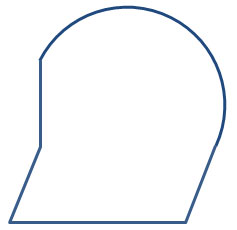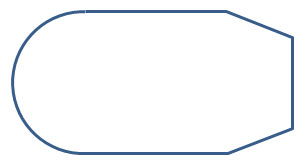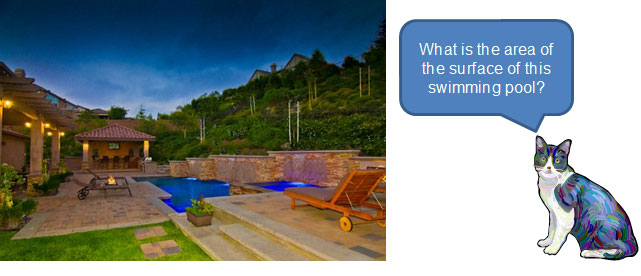
Source: Landscape Design Advisor, Flickr
In the introduction, you reviewed area formulas that you can use to calculate the area of particular polygons and circles. In the real world, not every figure can be cleanly classified as a rectangle, parallelogram, triangle, or trapezoid. Consider the following real-world objects for which it is useful to be able to determine the area.

Source: Landscape Design Advisor, Flickr

Source: Liben(121), Dezidor, Wikimedia Commons
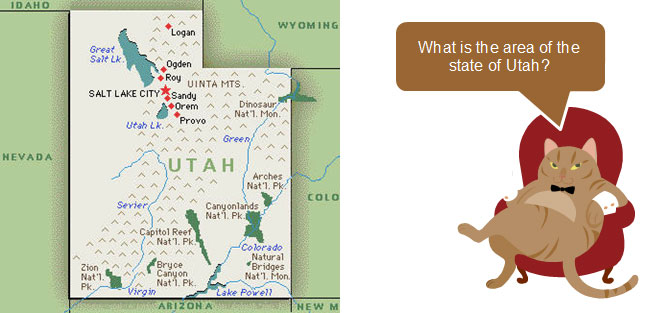
In order to calculate the area of these figures and many more, you need to be able to solve problems that involve composite figures.
![]() The border of a playground is shown below. Click the Animate button to see how one student partitioned the figure.
The border of a playground is shown below. Click the Animate button to see how one student partitioned the figure.
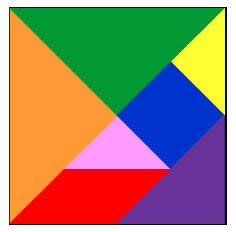
One way that you can break down a figure into triangles, squares, and parallelograms is to use tangrams. Tangrams are tiles from a Chinese puzzle that can be rearranged to create geometric designs.
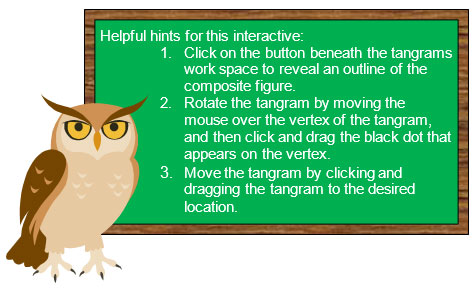
![]()
 Use the tangrams pieces in the interactive below to recreate the composite figures beneath the link to the tangrams interactive. Click on the image to open the interactive, which will open in a new browser tab or window. Then, click and drag on the tangram pieces until you have recreated the composite figure. There may be more than one possible answer.
Use the tangrams pieces in the interactive below to recreate the composite figures beneath the link to the tangrams interactive. Click on the image to open the interactive, which will open in a new browser tab or window. Then, click and drag on the tangram pieces until you have recreated the composite figure. There may be more than one possible answer.
When you are partitioning a composite figure into triangles, what patterns should you look for?

If you were partitioning a figure into rectangles, what would you need to look for?
For questions 1 – 3, partition the composite figure into a combination of rectangles, triangles, parallelograms, trapezoids, or circles (including semicircles or quarter circles). There may be more than one possible answer. You may assume that angles appearing to be right angles are right angles.

